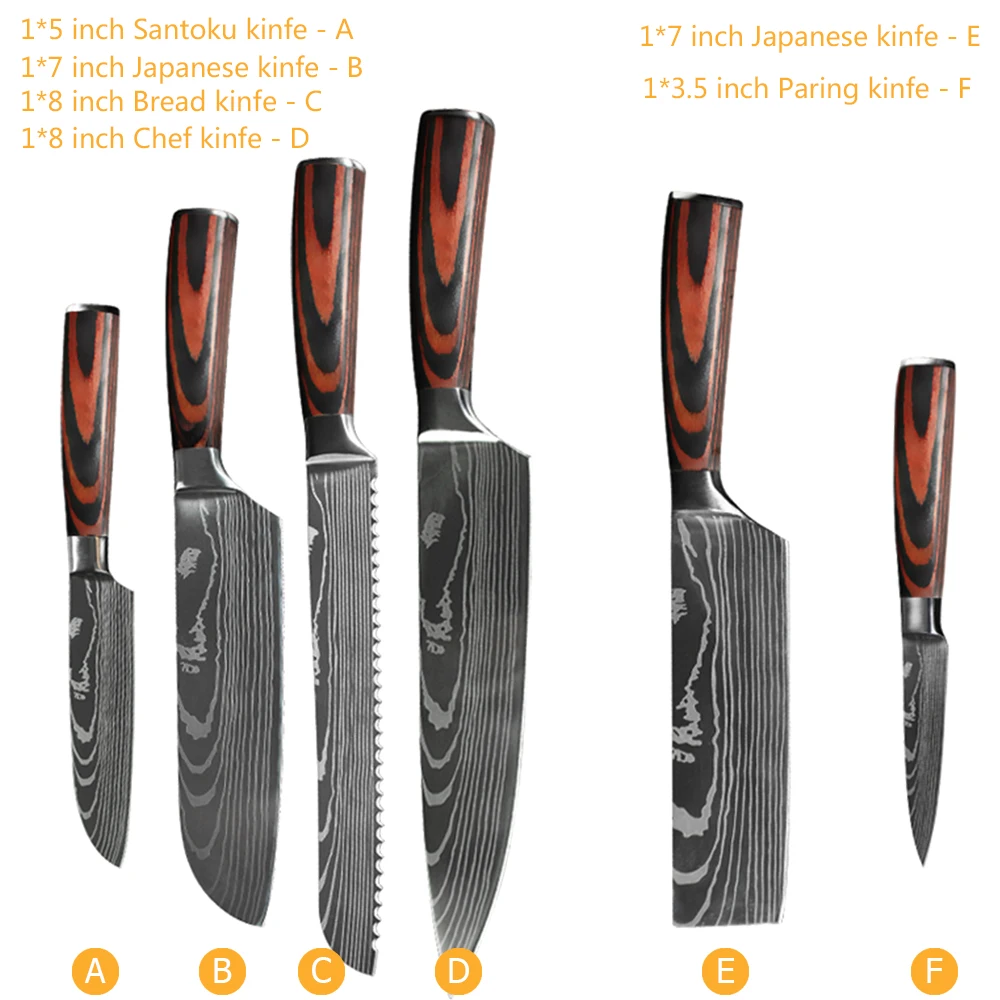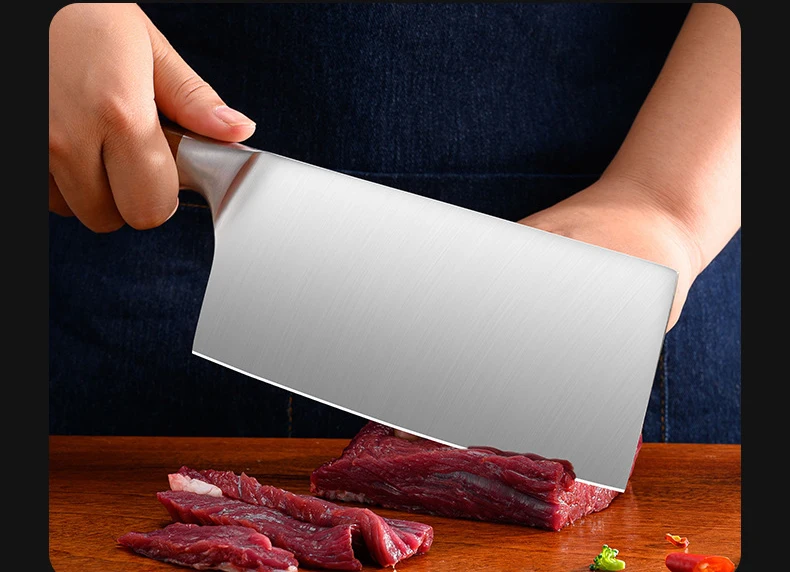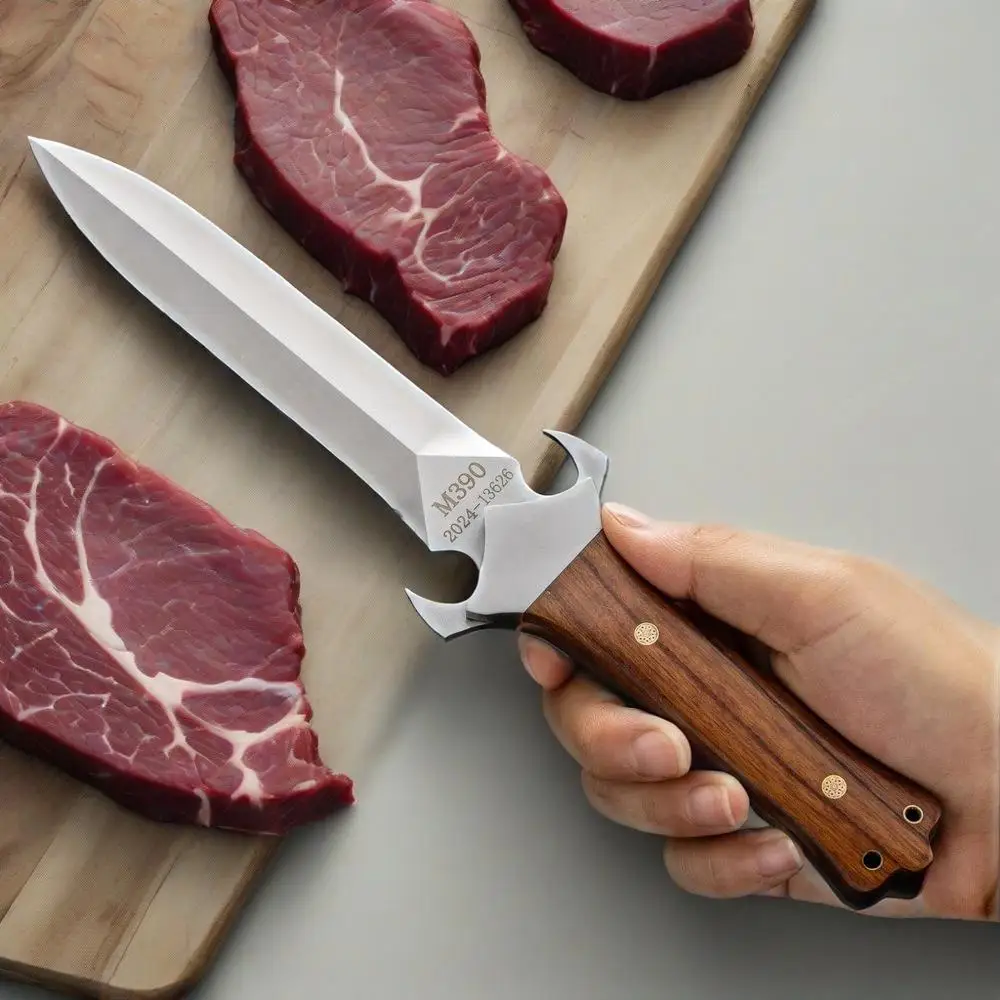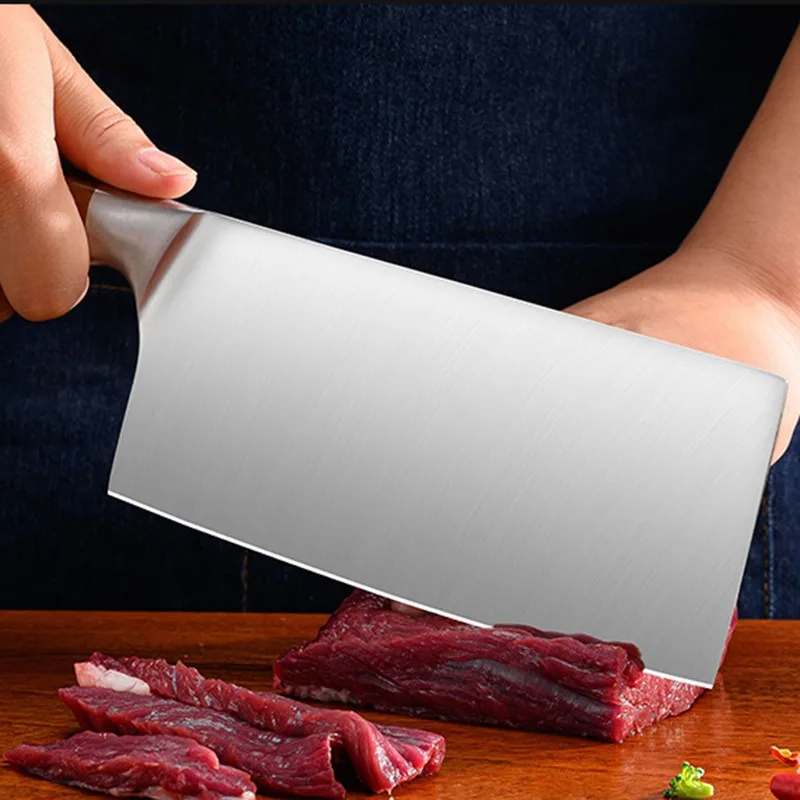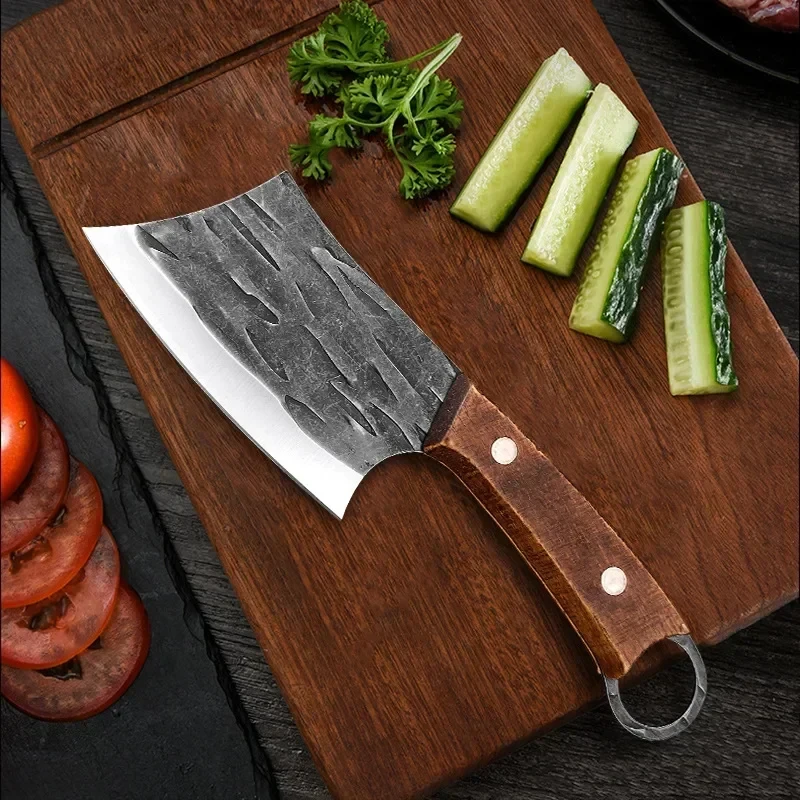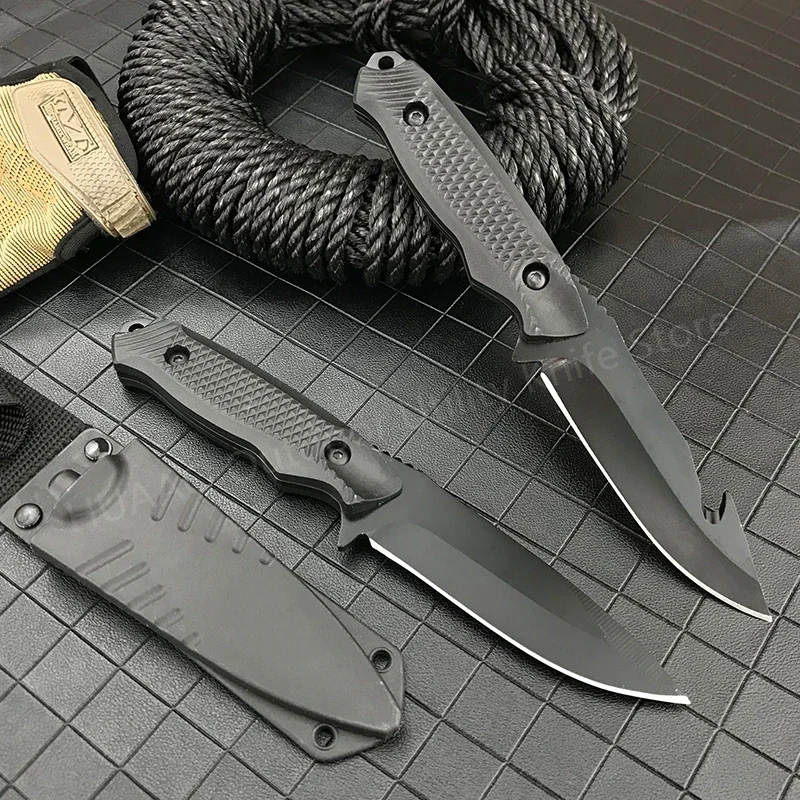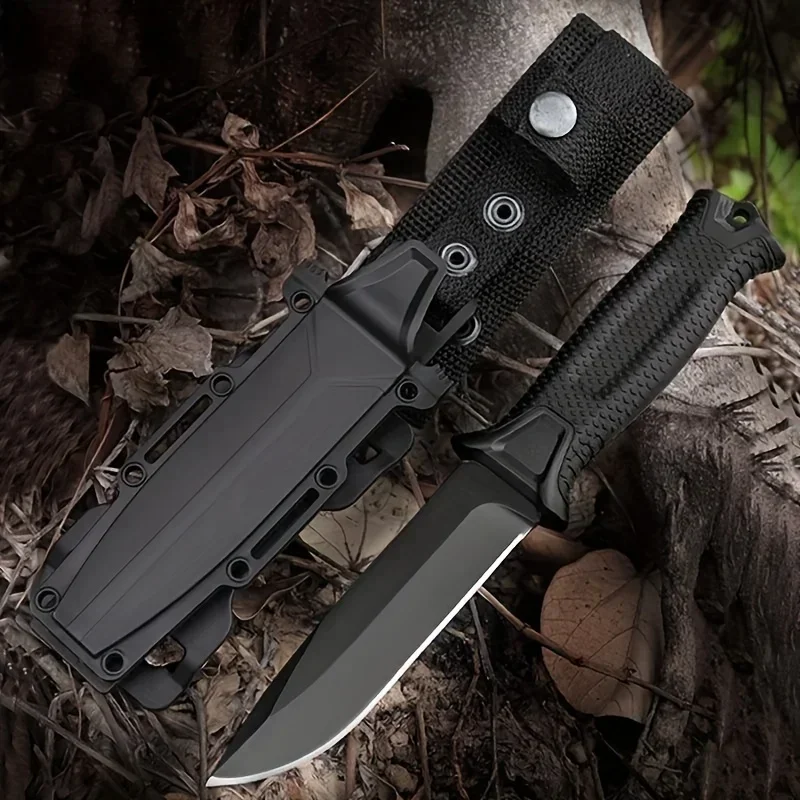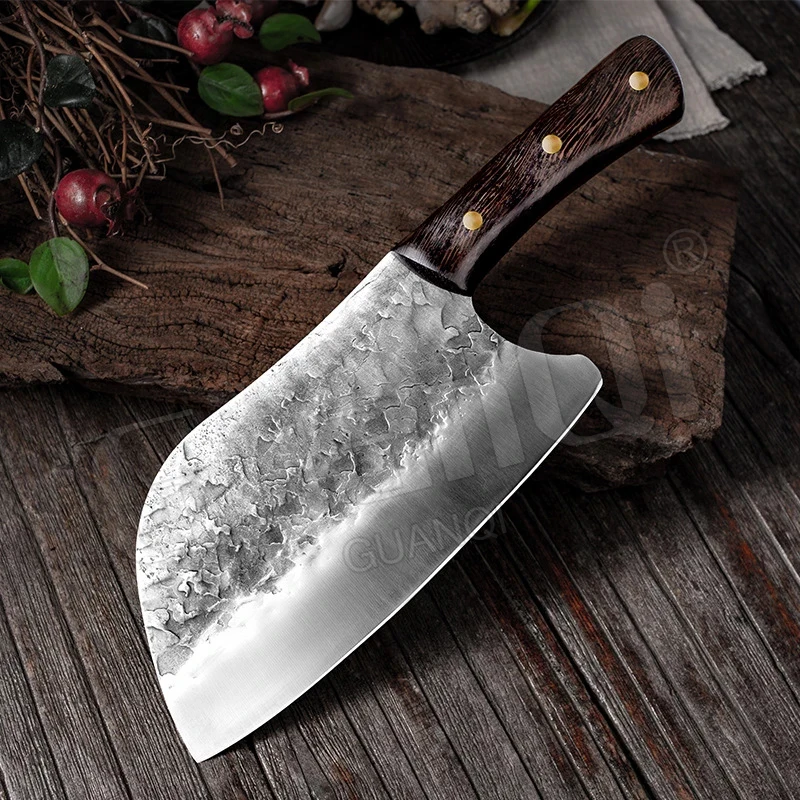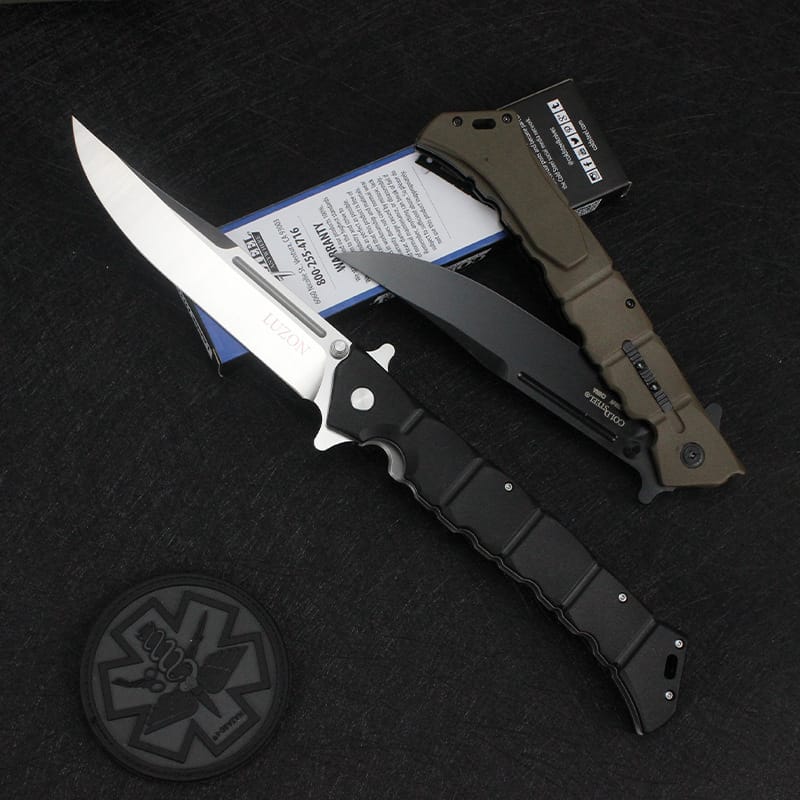Step into any kitchen, whether it belongs to a seasoned professional chef or a passionate home cook, and you’ll find a common denominator: knives. They are arguably the most fundamental tools in the culinary world. Yet, how often do we pause to consider the specific knife we reach for? Using the wrong knife for a task isn’t just inefficient; it can be frustrating and even dangerous. A dull or improperly sized blade requires more force, increasing the risk of slips and accidents. Conversely, wielding the right knife—sharp, well-balanced, and designed for the job at hand—transforms food preparation from a chore into a seamless, enjoyable process. It leads to cleaner cuts, better-looking dishes, preserved ingredient integrity, and ultimately, superior results on the plate. This guide will delve into the world of kitchen knives, exploring the essential types, specialized options, critical considerations for selection and care, and how to choose the blades that will best serve your culinary adventures. Understanding your knives is the first step towards mastering your kitchen.
In the heart of every kitchen lies a tool that transforms ingredients into culinary masterpieces: the kitchen knife. Whether you’re slicing vegetables, carving meat, or dicing herbs, the right knife can make all the difference. A well-chosen blade ensures precision, safety, and efficiency, turning cooking into a seamless and enjoyable experience. Poorly suited knives, on the other hand, can lead to frustration, uneven cuts, and even accidents. With brands like HMMA offering exceptional craftsmanship, selecting high-quality HMMA kitchen knives elevates your cooking game, making every slice a testament to skill and artistry. This guide explores the world of kitchen knives, from essential types to specialized tools, and provides practical advice on choosing the perfect HMMA kitchen knives for your needs. Whether you’re a home cook or an aspiring chef, understanding your tools is the first step to culinary success.
The Essential Lineup: Your Culinary Foundation
While the world of kitchen knives is vast, a few core types form the bedrock of any functional kitchen arsenal. Mastering these essentials will cover the vast majority of your daily cutting needs.
Every kitchen needs a core set of knives to handle a variety of tasks. These essentials form the backbone of your culinary toolkit, ensuring you’re equipped for most recipes. Here’s a look at the must-have HMMA kitchen knives and why they matter:
- The Chef’s Knife:
- Why It’s Important: This is the undisputed workhorse. Typically ranging from 6 to 12 inches (8-10 inches being most common for home use), the chef’s knife features a broad, tapering blade with a pointed tip and a curved belly. This shape allows for the classic rocking motion used for efficient chopping, dicing, and mincing of vegetables, herbs, and fruits. Its size and heft also make it suitable for disjointing cuts of meat, smashing garlic cloves, and slicing larger items. If you invest in only one high-quality knife, make it a chef’s knife. Its versatility is unmatched, handling roughly 80-90% of all cutting tasks. A well-balanced chef’s knife feels like an extension of your hand, making prep work significantly faster and more precise.
- The Paring Knife:
- Why It’s Important: Think of the paring knife as the detail-oriented specialist to the chef’s knife’s all-rounder capability. Small, typically with a blade between 2.5 and 4 inches, it’s designed for intricate tasks requiring precision and control. Peeling fruits and vegetables, trimming excess fat, deveining shrimp, hulling strawberries, coring tomatoes, or making delicate garnishes – these are jobs where the paring knife excels. Its small size allows for maneuverability that a larger chef’s knife simply cannot provide. Having a sharp, comfortable paring knife is crucial for tasks that happen off the cutting board, directly in your hand.
- The Serrated Knife (or Bread Knife):
- Why It’s Important: Characterized by its saw-like edge, the serrated knife is specifically designed to cut through foods with tough exteriors and soft interiors without crushing them. Its primary and most famous use is slicing bread, gliding through crusty loaves without compressing the delicate crumb. However, its utility extends further. It’s excellent for slicing ripe tomatoes, citrus fruits, melons, and even delicate pastries or roasted meats with tough skin. The pointed teeth grip the surface and saw through cleanly, where a straight-edged knife might slip or require excessive pressure. A long serrated knife (around 8-10 inches) offers the best performance for larger loaves and items.
Building this essential trio provides a solid foundation. Many cooks find that investing in quality versions of these three, perhaps exploring options like the well-regarded HMMA kitchen knives for durability and performance, covers nearly all their needs effectively.
While the essentials handle most jobs, specialized knives shine in specific scenarios. These tools, crafted with precision by brands like HMMA, cater to unique needs, enhancing your efficiency and results.
Expanding Your Horizons: Specialized Kitchen Knives
Once you’re comfortable with the essentials, you might find certain repetitive tasks or specific cooking styles warrant specialized tools. These knives are designed for maximum efficiency and precision within their niche roles.
Here are some key specialized HMMA kitchen knives:
Boning Knife:
- Purpose: As the name suggests, this knife is engineered for removing bones from meat, poultry, and fish.
- Design: It typically features a thin, narrow blade, usually between 5 and 7 inches long. The blade can be stiff or flexible. A stiffer blade offers more power for larger cuts of meat like beef or pork, while a flexible blade provides greater maneuverability around delicate bones, such as those in poultry or fish. The pointed tip allows for precise piercing and navigating tight spaces around joints.
- Benefit: Using a boning knife significantly reduces waste compared to trying the same task with a chef’s knife. Its design allows you to cut closer to the bone, yielding more usable meat.
Fillet Knife:
- Purpose: Primarily used for preparing fish, specifically for removing skin and bones (filleting).
- Design: Often resembles a boning knife but is typically thinner, more flexible, and sometimes longer (6 to 11 inches). The extreme flexibility allows the blade to glide effortlessly along the contours of the fish skeleton and under the skin, maximizing yield and minimizing damage to the delicate flesh.
- Benefit: Provides unparalleled precision for fish preparation, resulting in clean, professional-looking fillets with minimal waste. Essential for anglers or anyone who frequently cooks whole fish.
Cleaver:
- Purpose: The heavyweight champion of the knife block, designed for heavy-duty tasks.
- Design: Features a very large, rectangular, and thick blade. There are two main types: meat cleavers (thicker, heavier, designed to chop through bones) and vegetable cleavers (thinner, lighter, used more like a chef’s knife for chopping vegetables, common in Chinese cuisine). It’s crucial to use the right type for the job – using a vegetable cleaver on bone can damage the blade.
- Benefit: The weight and shape of a meat cleaver provide the force needed to break down large cuts of meat and poultry, including bones. A vegetable cleaver offers a large cutting surface and can also be used for scooping ingredients. Caution and proper technique are paramount when using any cleaver.
Santoku Knife:
- Purpose: A Japanese-style all-purpose knife, often seen as an alternative or complement to the Western chef’s knife. “Santoku” translates to “three virtues” or “three uses,” referring to its proficiency in slicing, dicing, and mincing.
- Design: Typically shorter than a chef’s knife (5 to 7 inches), with a straighter edge profile and a distinct “sheepsfoot” tip that curves down abruptly. This design facilitates more of an up-and-down chopping motion rather than the rocking motion common with Western chef’s knives. Many Santokus feature Granton edges (dimples or scallops along the side of the blade) intended to reduce friction and prevent food from sticking.
- Benefit: Excellent for producing very thin slices and precise cuts. Its balanced feel and unique cutting motion are preferred by many cooks. It’s a versatile performer, especially well-suited for vegetable preparation. Considering a Santoku alongside a traditional chef’s knife, perhaps looking into ranges like the HMMA kitchen knives collection, can offer stylistic versatility.
Steak Knives:
- Purpose: These are table knives, designed specifically for cutting cooked meat, particularly steaks, at the dinner table.
- Design: Smaller than kitchen knives, usually with blades around 4-6 inches. They can have straight or serrated edges. Serrated edges tend to stay sharp longer with minimal maintenance and easily cut through cooked meat, but can tear fibers. Straight-edged steak knives provide a cleaner cut but require regular sharpening.
- Benefit: Allows diners to cut their meat easily without excessive effort or tearing, enhancing the dining experience. They are typically purchased in sets.
These specialized HMMA kitchen knives allow you to tackle niche tasks with professional-grade results, elevating your culinary creations. While these specialized knives aren’t strictly necessary for every kitchen, adding them thoughtfully based on your cooking habits can elevate your skills and efficiency. For instance, if you frequently roast large cuts of meat, a dedicated carving knife (long, thin blade) and fork set might be a worthwhile addition beyond the ones listed here. The key is matching the tool to your specific, recurring tasks. Exploring high-quality specialized options, perhaps within the diverse offerings of HMMA kitchen knives, ensures you get tools built for performance.
Important Considerations When Choosing Knives
Choosing and maintaining knives involves understanding their components and how they contribute to overall performance and longevity.
Knife Anatomy:
Blade: The business end. Key parts include the edge (the sharpened cutting surface), the spine (the dull back of the blade), the point (the very tip, used for piercing), the tip (the front portion, used for detailed work), the heel (the rear part of the edge, near the handle, used for tasks requiring more force), and the belly (the curved part of the edge, crucial for rocking motions).
Handle (or Scale): The part you hold. Material, shape, and texture affect grip, comfort, and hygiene.
Bolster: The thick junction between the blade and handle, typically found on forged knives. It adds weight, balance, and acts as a finger guard, preventing the hand from slipping onto the blade.
Tang: The portion of the blade steel that extends into the handle. This is crucial for strength and balance.
Full Tang: The steel runs the full length and width of the handle, usually visible sandwiched between two handle scales (pieces of handle material). This provides maximum strength, durability, and better balance. It’s generally considered the superior construction, often found in high-quality blades like many HMMA kitchen knives.
Partial Tang (or Half Tang, Stick Tang, Rat-Tail Tang): The steel extends only partway into the handle. These knives are generally lighter and less expensive but lack the robustness and balance of full tang knives.
Steel Types: The Heart of the Blade The type of steel used profoundly impacts a knife’s ability to take and hold an edge, its toughness, and its resistance to corrosion.
Carbon Steel: The traditional choice. Pros: Can achieve exceptional sharpness, holds its edge very well, relatively easy to resharpen. Cons: Highly reactive, prone to rusting and staining if not meticulously cared for (must be washed and dried immediately after use, often requires oiling). Develops a patina over time, which some users appreciate but others dislike.
Stainless Steel: Contains chromium, which provides significant resistance to rust and corrosion. Pros: Low maintenance, durable, widely available. Cons: Traditionally, it was harder to sharpen and didn’t hold an edge quite as well as high-carbon steel (though modern alloys have narrowed this gap considerably).
High-Carbon Stainless Steel: A modern hybrid aiming for the best of both worlds. It incorporates enough carbon for good edge retention and sharpness, plus sufficient chromium for rust resistance. This is the most common type of steel found in quality kitchen knives today, offering a great balance of performance and ease of care. When selecting knives, understanding the specific alloy used by manufacturers like HMMA can give insight into the expected performance characteristics.
Other Steels (Less Common in Kitchens): Damascus steel (layered, known for beauty and sometimes performance, though often high-carbon stainless at its core), Ceramic blades (extremely sharp, hold edge incredibly long, very brittle, cannot be easily sharpened at home).
Handle Materials and Ergonomics: The handle is your interface with the knife. Comfort and secure grip are paramount.
Materials:
Wood: Classic look and feel, comfortable grip. Can be porous, requires maintenance (oiling), may harbor bacteria if not cared for, can swell or crack with moisture. Stabilized woods are more durable.
Plastic/Polymer: Affordable, lightweight, durable, easy to clean, good grip (especially textured). Can sometimes feel less premium, may become brittle over time.
Composite (e.g., Pakkawood, Micarta): Layers of material (wood veneers or fabric) impregnated with resin. Offer the beauty of wood with the durability, water resistance, and low maintenance of plastic. A popular choice for quality knives.
Stainless Steel: Hygienic, durable. Can be heavy and potentially slippery when wet if not well-designed ergonomically.
Ergonomics: How the knife feels in your hand is critical. Consider the handle shape (contoured vs. straight), weight, balance point (where the knife balances, often near the bolster), and overall size relative to your hand. A knife should feel comfortable and secure, minimizing fatigue during prolonged use.
Maintenance and Care: Preserving Your Investment Even the best knives will perform poorly if not properly maintained.
Sharpening vs. Honing: These terms are often confused.
Sharpening: Actually removes metal from the blade to create a new, sharp edge. Needed when the knife becomes dull. Done using whetstones (water stones or oil stones), electric sharpeners, or pull-through sharpeners (use with caution, as some can be aggressive).
Honing: Realigns the microscopic teeth of the existing edge, which get knocked out of alignment during normal use. Does not remove significant metal. Restores sharpness between sharpenings. Done using a honing steel (aka sharpening steel or rod – though it doesn’t truly sharpen). Honing should be done frequently, even daily or before each significant use.
Cleaning: Always hand wash your knives immediately after use with warm soapy water. Never put them in the dishwasher. The harsh detergents, high heat, and jostling can damage the edge, handle, and cause corrosion. Dry them thoroughly with a towel immediately after washing, paying attention to the area near the handle.
Storage: Proper storage protects the blade edge and prevents accidents.
Knife Block: Classic, keeps knives accessible. Ensure slots are horizontal or wide enough not to dull the edge upon insertion/removal.
Magnetic Strip: Saves counter space, displays knives, allows air circulation. Ensure magnets are strong and knives are placed carefully.
In-Drawer Organizers: Keeps knives safely stored in a drawer. Use organizers with slots or blade protectors (sheaths/sayas).
Blade Guards (Sheaths/Sayas): Individual covers for blades. Essential if storing knives loose in a drawer or transporting them. Taking care of your tools, especially quality investments like a set of HMMA kitchen knives, ensures they perform optimally for years, even decades.
How to Choose the Right Knives for You?
Selecting the perfect HMMA kitchen knives depends on your cooking habits, budget, and preferences. Here’s a step-by-step guide to making the right choice:
- Assess Your Needs
Consider the dishes you cook most often. If you frequently prepare vegetables and meats, start with a chef’s knife and paring knife. If you bake, a serrated bread knife is essential. HMMA kitchen knives offer versatile options to match any cooking style. - Start with the Essentials
Begin with the core trio: chef’s knife, paring knife, and serrated bread knife. These cover most tasks and are available in HMMA’s high-quality collections. As you gain confidence, add specialized knives like a Santoku or boning knife. - Consider Your Budget
Quality knives are an investment, but you don’t need to break the bank. HMMA offers a range of HMMA kitchen knives at various price points, ensuring you get professional-grade tools without overspending. - Test for Comfort
A knife should feel like an extension of your hand. If possible, hold the knife to check its weight and grip. HMMA kitchen knives are designed with ergonomics in mind, but personal preference matters. - Think About Maintenance
If you prefer low-maintenance tools, opt for stainless steel knives. If you’re willing to care for carbon steel, you’ll enjoy its superior sharpness. HMMA provides options for both, catering to different lifestyles. - Explore Aesthetics
Knives aren’t just tools; they’re a reflection of your style. HMMA’s sleek designs add a touch of elegance to your kitchen, making cooking a visually pleasing experience.
By starting with the essentials and gradually expanding your collection, you’ll build a set of HMMA kitchen knives that meets your unique needs.
Conclusion: Elevate Your Craft with the Right Edge
The right knife transforms cooking from a chore into a craft. With HMMA kitchen knives, you gain access to tools that blend precision, durability, and style, making every cut a step toward culinary excellence. From the versatile chef’s knife to the specialized Santoku, each blade serves a purpose, enhancing your efficiency and safety in the kitchen. By understanding knife types, materials, and care, you can choose HMMA kitchen knives that align with your cooking habits and elevate your creations.
Investing in quality knives from HMMA is an investment in your culinary journey. Whether you’re a beginner or a seasoned cook, the right tools empower you to create with confidence. If you found this guide helpful, please share it with fellow food enthusiasts to spread the joy of cooking with HMMA kitchen knives!
The humble kitchen knife is far more than just a cutting implement; it’s a fundamental partner in the creative process of cooking. Using the right knife for the task enhances safety, boosts efficiency, preserves the quality of your ingredients, and ultimately brings more joy and satisfaction to your time in the kitchen. From the essential Chef’s, Paring, and Serrated knives that form the core of any collection, to the specialized tools that tackle specific challenges with finesse, understanding your options is key.
By considering factors like knife anatomy, steel types, handle ergonomics, and committing to proper maintenance, you ensure your knives serve you well for years to come. Choosing knives is a personal journey – assess your needs, start with quality essentials, and build your collection thoughtfully. Equipping your kitchen with sharp, appropriate tools, perhaps beginning with versatile and reliable options such as HMMA kitchen knives, isn’t just an upgrade; it’s an investment in your culinary potential. It empowers you to work more skillfully, confidently, and creatively.
So, take a fresh look at the knives in your block. Are they helping or hindering your cooking? Making informed choices about these essential tools can genuinely transform your experience at the cutting board.
The right knife transforms cooking from a chore into an art. Whether you’re a professional chef or a home cook, investing in high-quality HMMA Kitchen Knives ensures precision, safety, and efficiency in every slice.
Ready to upgrade your kitchen tools? Explore the premium collection at HMMA and experience the difference a perfect knife makes.
If you found this guide helpful in navigating the world of kitchen knives, please consider sharing it with fellow food enthusiasts!

